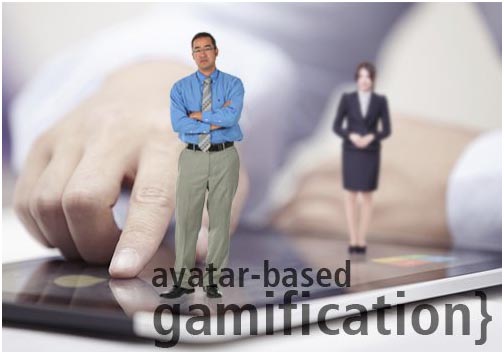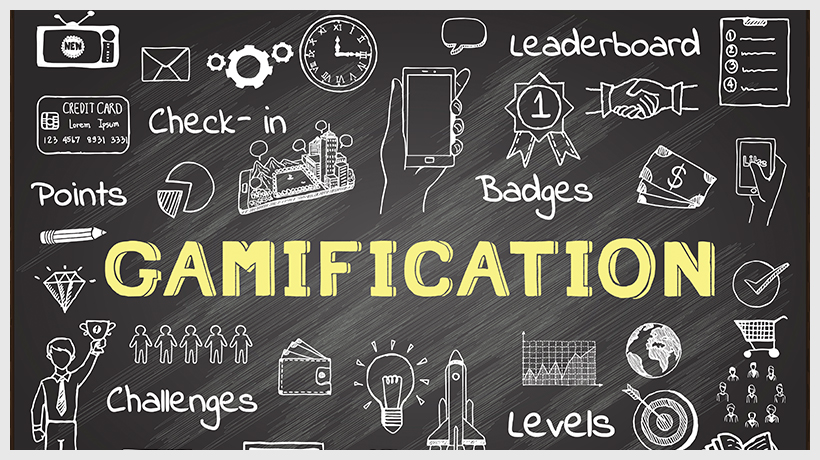
While gamification has been in use for corporate training for several years, there is still a lingering doubt on its impact. In this article, I share 7 gamification techniques for corporate training that work!
What Gamification Techniques For Corporate Training Still Work?
Gamification techniques use elements and principles of gaming to create an engaging learning experience. Some of the associated gains are:
- Higher learner motivation (to participate and complete).
- Higher engagement levels.
Gamification techniques can be effectively used to:
- Have fun and learn.
- Apply their learning on the job (by providing them practice zones featuring scenarios, similar to what they will handle in real life. Here, the learners can practice and hone their skills in a safe environment).
- A longer-term implementation of gamification techniques can influence behavioral change.
So, How Can You Make Gamification Techniques Work In Corporate Training?
Let’s take a step back and identify what the expected gains are from any learning strategy.
Your list is likely to read that it should be:
- Motivating
- Engaging
- Relevant and relatable (preferably personalized)
- Challenging
- Rewarding
It must:
- Create sticky learning
- Facilitate the application of learning
- Provide room for practice and proficiency gain
- Provide reinforcement to ensure the “forgetting curve” does not step in
- Trigger behavioral change
How You Can Use Gamification Techniques For Corporate Training To Influence Each Aspect
- Step 1
Identify barriers (intrinsic or extrinsic) that might be hindering the required changes and thereby improve the learners’ motivation levels. - Step 2
Generate interest in learning by providing relevant and personalized learning paths. - Step 3
Create effective learning experience using scenarios, simulations, and challenges. - Step 4
Provide feedback for performance improvement that can help learners pause and think or recalibrate their way forward. - Step 5
Use rewards and recognition to sustain the learners’ momentum and motivation, and ensure that learners walk away with a sense of accomplishment. - Step 6
Implement repetition and reiteration for successful change in behavior.
What Is the Impact You Will See If You Apply the Right Gamification Technique For Corporate Training?
Through the right gamification technique, you can:
- Create a sticky learning experience
- Provide reinforcement (to offset the “forgetting curve”)
- Ensure the successful application of learning on the job
- Influence or trigger the desired behavioral change
How Can This Value Be Delivered?
At EI, our gamification practice is nearly 5 years old. During these years, we have created successful corporate trainings that have leveraged on gamification techniques at several levels, including:
- Partial gamification (to enhance traditional eLearning courses)
- Gamified aids to support ILT
- Gamified learning path
- Game-based learning
- Gamified portals
Our Next Gen gamification techniques build up from the success of the current approaches. For instance,
- Instead of just having simple badges and leaderboards for each challenge, you can put the learner through a more complex narrative that can truly challenge him or her. The narrative is selected based on the content type, learner profile, and is aligned to the learning goals.
- Personalization holds the key to the learner’s attention, engagement, and motivation. You can use mobile apps for learning to offer a personalized learning path that is aligned to the learner’s goals. Thereby, it is relevant and more engaging.
- You can use a combination of learning strategies to gain higher impact. For instance, the usage of immersive techniques like a Virtual Reality (VR)-driven learning path that is gamified will surely multiply the impact and help you meet the learning goals.
7 Next Gen Gamification Techniques For Corporate Training
You can opt for the following 7 Next Gen gamification techniques for corporate training and achieve your mandates successfully:
1. Longer-Term Gamification
Behavioral change requires the use of gamification over a long period of time. You can use this longer-term learning path to have milestones over successive weeks/months/quarters.
2. Periodic Checkpointing Of Learners’ Progress
Alongside, plan for a periodic assessment of learners’ progress (against the required outcomes) that can range from learning acquisition, its application, or a behavioral change.
3. Multiply The Impact
To make the learning journey more engaging, you can add immersive approaches like Virtual Reality or wearable tech in your fold.
4. Leverage On Microlearning-Based Gamification
Give the learners a “bite-sized” gamification experience.
5. Personalized Gamification
Offer personalized learning and gaming paths for learners.
6. Social Media-Based Gamification
Let the learners collaborate with peers or experts and address challenges or solve problems, much the same way they need to in real life.
7. Invest On Niche Gamification Portals
These can be designed to offer customized learning paths and elements of gamification, microlearning, and social learning.
This Seems To Be Too Good To Be True; Is There A Catch?
Over the years, I have seen several views (or misconceptions) associated with gamification techniques for corporate training.
I share 5 myths and contrast them with facts to highlight how you can make gamification techniques effectively work for corporate training.
Myths And Facts #1
- Myth
Gamification in eLearning doesn’t really help learners learn. - Fact
Gamification is not just about having fun. Much like traditional eLearning, it can be used to meet specific learning outcomes.
As I have highlighted, you can map the learning goals to a gamified approach to gain better engagement. It also creates a far more sticky learning experience. The use of gamification techniques over a period of time will influence learner behavior as well.
Myths And Facts #2
- Myth
Gamification cannot drive learner performance. - Fact
Several aspects of learning, including retention, an application on the job, as well as behavioral change can be influenced by gamification.
The Next-Gen gamification techniques for corporate training (highlighted earlier in the article) show you exactly how this can be achieved.
Myths And Facts #3
- Myth
Gamification doesn’t provide real value to learners and businesses. - Fact
Both learners and businesses see value in this approach at several levels.
Learners love it as learning is fun, challenging, and rewarding. L&D teams find value in it on account of its wide application across varied corporate training needs. The correct gamification technique can help them deliver their goals (learning, its application, or behavioral change).
Myths And Facts #4
- Myth
Gamification can’t drive learning. - Fact
Gamification can provide an effective approach to drive learning.
This is on account of its inherent features that resonate with learners and help them perform better.
Myths And Facts #5
- Myth
Gamification appeals only to Millennials. - Fact
The correct usage of gamification techniques will ensure that it will be well received across the multi-generational workforce.
I hope this article will help you use gamification techniques extensively for your corporate training and my 7 gamification techniques for corporate training will help you make it work well for you.
If you have any queries or need any specific support, do contact me at apandey@eidesign.net.
Read More:



